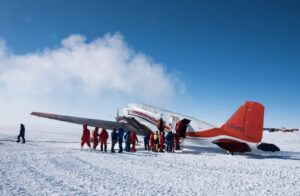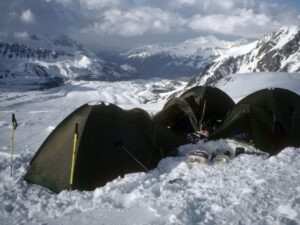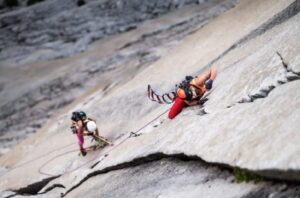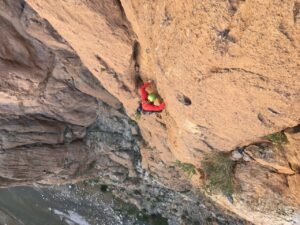Siberia used to be a land of condemnation, an exile for criminals and enemies of the state. Even today, parts of it still feel like the edge of the world. But that very wildness and isolation continues to attract those in search of adventure.
The Great Siberian Traverse follows three American skiers as they explore Siberia’s elusive ski culture and battle with their own personal isolation for a month. Ingrid Backstrom, Nick Martini and Callum Pettit travel the world’s longest railway, the Trans-Siberian. They stop at small villages and grapple with language barriers, multiple time zones and homesickness against the blurry whiteness of a Russian winter that has confounded outsiders from Napoleon forward.

Ski-hunting technique in Siberia. Photo: The North Face
The Americans discover that skiing in Russia comes with more risk than they know. Their guides, who live in these mountains, do not sugarcoat such dangers as avalanches, injuries and freezing to death. Fortunately, the Westerners adapt to their new environment and learn to relate well to their Russian hosts.
In Siberia, skiing is an ancient tradition but also a part of contemporary life. Pockets of indigenous Siberians in the village of Ust’ Anzas, for example, continue to live as subsistence ski-hunters, just as their ancestors have done for centuries. They make wooden skis by hand, and the climbing skins with which they shin up slopes are made from real skin. A slim wooden paddle helps control their movements on the slope. The warmth of these people makes the harsh Siberian winter seem not so cold after all. This film shows skiing to be a universal language spoken by those who see the powdery slopes not as obstacles, but as home.

A young Siberian ski-hunter. Photo: The North Face
https://www.youtube.com/watch?v=obIZLx1diIU&t=1445s






